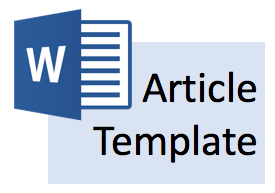Macro environment analysis of automotive industry in Indonesia
Abstract
Indonesia remains attractive for economic study. Its development makes Indonesia interesting for investment with no exception to automotive industry. Indonesia is the country holding the biggest car purchase record South East Asian countries. There will be more challenges along with opportunities ahead therefore industrial analysis is required in order to help automotive players in Indonesia to prepare appropriate strategies for their sustainability and growth. In this paper, PEST analysis was utilized to identify politic, economic, social and technology environment of current Indonesia automotive industry and 5 Forces Michael Porter analysis was utilized to measure the industry attractiveness. It was founded out that there is potential in production growth because government intervened by promoting local content requirement policy for all OEMs (Original Equipment Manufacturers) to be fully implemented in 2019. The opportunity has also come from growth of financial industry since 65% of Indonesian people buy car by credit. Infrastructure development and government spending will also drive industry growth for specific category of vehicles. However control from government is still needed to balance the use of personal vehicle and mass transportation, otherwise it will result in more traffic problem, air pollution and decrease comfort in big cities such as Jakarta. While rivalry, threat of substitute and bargaining power of suppliers are high, bargaining power of buyer is low and threat of new entrant for automotive industry in Indonesia is medium considering high initial investment
Keywords
Full Text:
PDFReferences
References
Bank of Ayudhya. (2018). Industry Outlook. Retrieved from https://www.krungsri.com/bank/en/Other/research/industry/industry-outlook.html
Blokdyk, G. (2018). PEST analysis: Standard Requirements: CreateSpaces Independent Publishing Platform.
Gaikindo (2018). These 5 Japanese Brands Control 90% of Indonesia's Car Market | Indonesia Investments. Retrieved from https://www.indonesia-investments.com/id/news/todays-headlines/these-5-japanese-brands-control-90-of-indonesia-s-car-market/item8029
Gupta, A. (2013). Environmental and pest analysis: An approach to external business environment. Merit Research Journal of Art, Social Science and Humanities, 1(2), 13-17
Hartanto, A. (2018). Menperin: Industri otomotif berkontribusi 10,16% pada perekonomian nasional. Retrieved from https://industri.kontan.co.id/news/menperin-industri-otomotif-berkontribusi-1016-pada-perekonomian-nasional
Indonesia Investments. (2017). Number of Internet Users Rising Rapidly in Indonesia | Indonesia Investments. Retrieved from https://www.indonesia-investments.com/news/todays-headlines/number-of-internet-users-rising-rapidly-in-indonesia/item7303?
IPSOS. (2018). Opportunities and Challenges in Indonesia's Automotive Industry. (2018). Retrieved from https://www.ipsos.com/en/oppotunities-and-challenges-indonesias-automotive-industry
Porter, M. E. (2007). Understanding industry structure. Harvard Business School, 13, 1-16.
Ribka, S. (2017). Local content requirement for cars to hit 90% by 2019: Industry Ministry. Retrieved from http://www.thejakartapost.com/news/2017/02/10/local-content-requirement-for-cars-to-hit-90-by-2019-industry-ministry.html
Sales (2016). ASEAN Automotive Federation. Retrieved from http://www.asean-autofed.com/files/AAF_Statistics_2016.pdf
Refbacks
- There are currently no refbacks.


